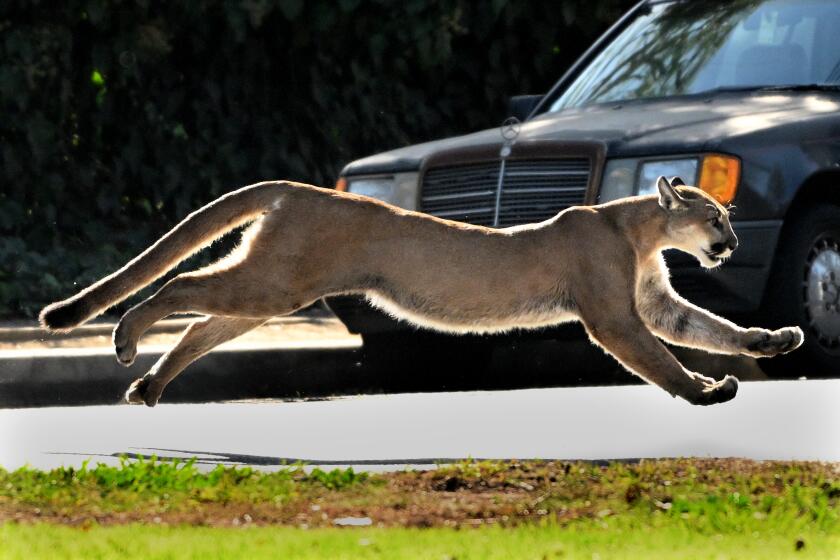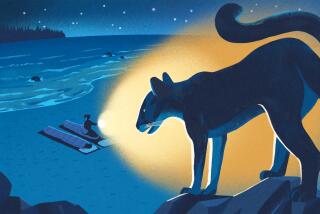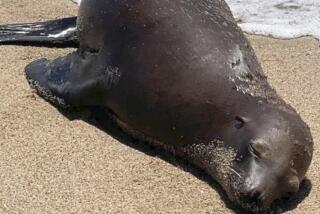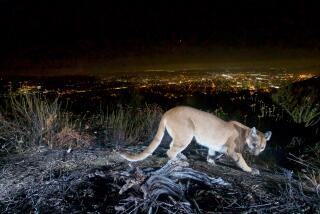Mountain lion kills man, injures another in Northern California
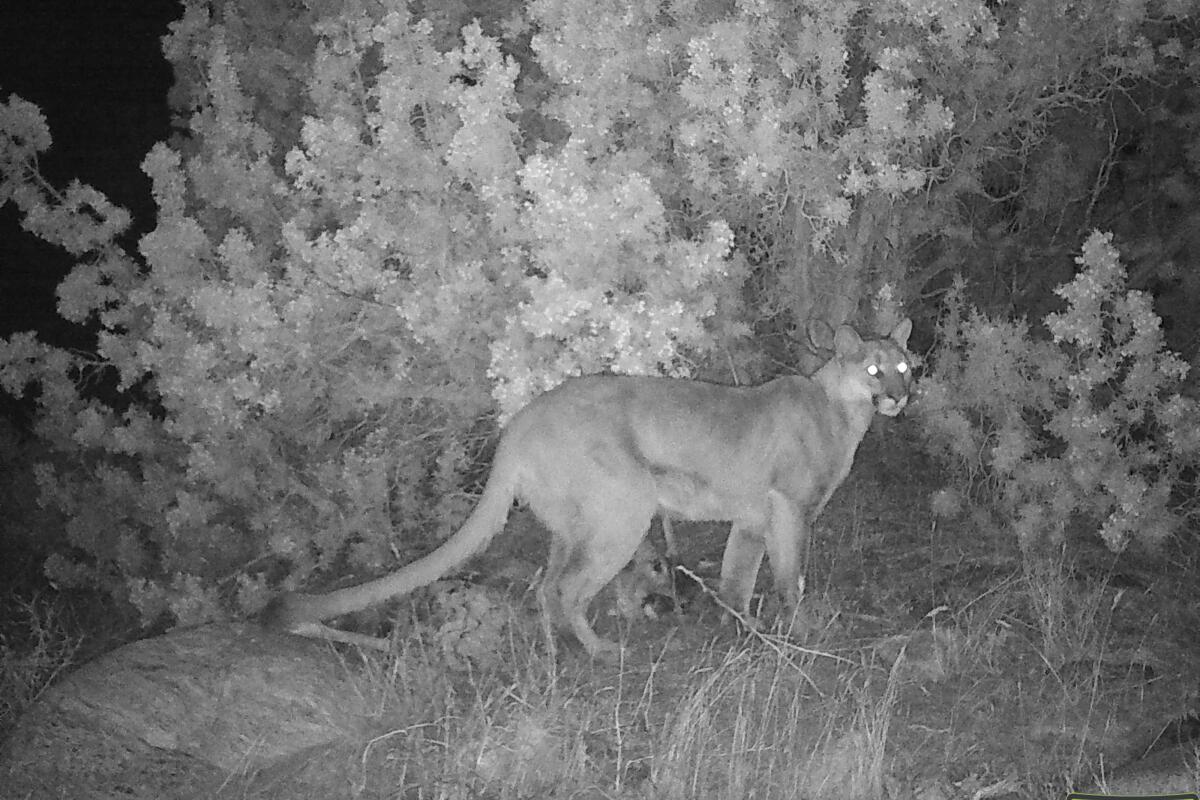
A man was killed and his brother injured Saturday when a mountain lion attacked them as they combed a forested area for deer antlers, according to authorities.
The attack in El Dorado County is believed to be the first fatal incident involving a mountain lion in California in 20 years.
The El Dorado County Sheriff’s Office received a 911 call at 1:13 p.m. from an 18-year-old who reported that he and his 21-year-old brother had been attacked by a mountain lion in a remote area of Georgetown, a town in Northern California’s Gold Country. The younger brother suffered “traumatic injuries” to his face and was separated from his brother during the attack, a Sheriff’s Office news release said.
El Dorado County sheriff’s deputies and paramedics arrived in the area about 10 minutes later and gave the 18-year-old medical aid. They soon found a mountain lion crouched next to the other victim, who had been killed, and shot toward the animal, scaring it off.
Scientists have completed the first comprehensive estimate of mountain lions in California, a vital statistic needed to shape puma-friendly land-use decisions and ensure that the predators can find room to roam, mate and find prey.
Two game wardens with the state Department of Fish and Wildlife and an El Dorado County trapper shot and killed the mountain lion, which was still within “close proximity” of the scene of the attack, Sgt. Kyle Parker of the El Dorado Sheriff’s Office said. The body of the animal was taken in for examination to “figure out why the attack occurred,” Parker said.
The younger brother has undergone multiple surgeries for his injuries and is expected to make a full recovery, officials said Sunday.
“The family is grateful for the prayers and condolences from the community however wishes for privacy in order to process this tragic event,” sheriff officials wrote in a statement.
Beth Pratt, who heads the nonprofit National Wildlife Federation’s #SaveLACougars campaign, posted on social media that this was the first fatal attack in California since 2004.
“Mountain lion attacks are extremely rare,” Pratt wrote. “Mountain lions have killed four people since 1986, in a state with a population of 40 million. These statistics don’t diminish the tragedy when a person is killed or injured by a lion, but it puts the risk in perspective. Automobiles, by contrast, cause on average ... 3,000-4,000 deaths each year in California.
“Most Americans’ encounters with mountain lions occur without us even being aware of it,” the post added.
Work on the $92-million bridge, which will be done at night over a month or more, will yield the largest wildlife crossing in the world.
In El Dorado County, a jogger was killed by a mountain lion in 1994. The victim’s body was found near the Sierra foothills trail where she had been running, with signs of repeated attacks before being dragged 100 feet downhill to a spot near a tree. Her body had been covered with leaves and other debris, as mountain lions do to hide their prey. A week later trackers located the animal and killed it.
Parker said mountain lions, although common in rural El Dorado County, are not often seen during the day, as they are usually most active at night. “They’re kind of a unicorn in a way,” he said. “They’re pretty elusive.”
But he said their cry is distinctive — like a “lady screaming.”
Wildlife authorities said encounters between humans and mountain lions are expected to increase because of shared terrain.
To guard against attack, they caution people not to hike alone and to keep children close, according to advice posted by El Dorado County. If a lion is seen, don’t approach it or run away, but try to appear larger by raising your arms or opening your jacket. Try to chase it away by throwing rocks or sticks. And if attacked, stand and face the animal to avoid being bitten on the head or neck and fight back with rocks, sticks, caps, jackets, garden tools or bare hands.
Staff writer Hannah Fry contributed to this report
More to Read
Sign up for Essential California
The most important California stories and recommendations in your inbox every morning.
You may occasionally receive promotional content from the Los Angeles Times.
